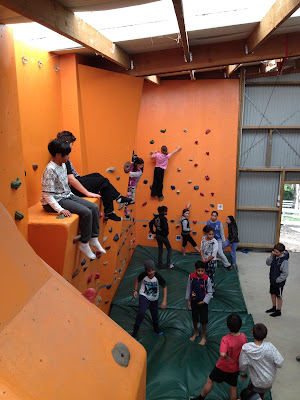I have been very fortunate on all placements as I was able to see various ways and strategies of groupings for reading, writing, and mathematics.
Here are some examples of what I have been a part of or helped to implement within different classroom routines.
During my fourth placement at Tuahiwi School (bilingual, NE-yr4) we used rotations during reading and maths times. While children were in their rotations different groups were pulled out for explicit teaching of strategies. The children were grouping according to tuakana teina partnerships. Because of the vast age ranges and abilities in this rūma the activities needed to suit the wide range of the students, the activities reflected this and were changed to give all students the opportunity to extend their learning.
 |
Reading rotations on the left, maths rotations on the right.
|
During my fifth and final placement at Halswell School we employed a fluid grouping system for maths. We began using this at the start of term 3 (the beginning of my placement). I helped to implement this system in the space using the self-directed learning progressions that another teacher had created and previously used. This meant that all children had a name tag and that name tag went next to the multiplication/division strategy that they were working on. The teacher then picked up groups along the strategies for explicit teaching. Students also had the option to further their learning themselves when they were not being seen by a teacher. Students could access the videos or page numbers in a text book and work from that. Once students mastered a strategy they needed to show a teacher or a buddy to get it signed off and move to the next strategy. I thoughly enjoyed using this system of groupings for mathematics and would seriously consider using this in my future classrooms.
Have a look at how it was set up!
 |
| Using fluid groupings |
At Halswell School we also used workshops during reading time. The workshops were based around skills needed in order to be successful in researching, which was our focus for that term. Students could opt into what ever workshops they wanted based on their individual needs. All students were encouraged to suggest workshops that they wanted to take. Students were kept accountable by signing up using Google Sheets, recording which workshops they went to in their weekly timetables, and by showing that they are using those skills in their notes.
Some students identified a need based around not always need a device for researching. So, I worked closely with the students and helped them learn about using the public libraries to their full potential. We looked at how to use the catalogue online to find a text that would help us and then I took a group down to Te Hāpua Library to find that specific book.
 |
| A small capture of how reading workshops were organised. |





























